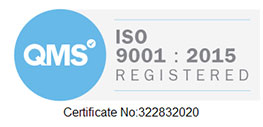Power System Analysis Software – Overview
A question that we are asked fairly regularly is ‘What power system analysis software package should I buy / use?’ This seemingly innocuous question, actually covers a huge topic that is worthy of a whole technical paper on its own. The important point before answering this question is to consider the kind of power system that will be analysed. Large transmission systems have different requirements to small industrial plants or building services and what is right for one industry is not necessarily right for another. So, at the risk of over simplifying things, there are five main categories of power system analysis packages:
- Transmission & Distribution systems packages
- Heavy industry packages / Oil & Gas
- Building services & small Power
- Electromagnetic / mathematical modelling packages
- specialist design packages (i.e. overhead lines, earthing, lighting etc.)
To begin the process of selecting the most appropriate software package, the first step is to identify the type of plant you will be most frequently analysing, and the kind of analysis that will be carried out. If you are designing and operating relatively simple 11kV networks, and carrying out loadflow and short circuit studies then you will have a very different requirement to an industrial user with several dozen substations and a need to run arc flash studies, complex protection coordination and contingency analysis. DNO / Utility companies have very specific requirements that need large database management and scripting and automation capabilities, whilst industrial users tend to want simpler and faster programs with good user interfaces and support.
Once this has been done, it is possible to narrow your selection, to a few of the main packages that would be suitable for your application. It is then best to find out the costs from the manufacturers and identify if there are any preferred packages used in your industry. Aurora would also recommend requesting a trial product from the different manufacturers, which can be evaluated free of cost to give an indication of the capabilities. If testing a software package, it is a good practice to evaluate the software against a known network or previous project, so any discrepancies or software quirks can be identified.
Most software packages can be tremendously expensive and range from a few thousand pounds, to tens of thousands, thus any investment should be considered carefully. Many of these packages are modular and scalable based on the number of busbars and modules required. So, a simple 50 busbar package with load flow and short circuit facilities can be financially cheap, while an unlimited busbar package with all functions including transient stability, harmonics and protection can be several tens of thousands. It is also worth noting that many manufacturers offer these packages on a lease scheme, so this can help avoid a large capital investment.
Transmission & Distribution
Large transmission system packages are used mainly by large transmission and distribution companies, who have large heavily interconnected systems with many hundreds of substations. Typical products in this range are Siemens PSS/E, DigSilent, IPSA and NEPLAN etc.
These packages can usually carry out the full spread of analysis such as loadflow, short circuit, motor starting, arc flash, protection coordination, motor starting and stability, and many also have very powerful scripting capabilities built in, as well as facilities to design specific models of governors and exciters. However, these packages are often not particularly user friendly, and lack easy facilities for modelling smaller detail such as small motors and LV distribution systems.
Industry
These are the most generic pf packages, and are aimed at a much wider range of industries which can include Oil & Gas, Water, Pharmaceutical, Steel Works, Manufacturing Plants etc. Typical products in this range are ETAP, SKM Powertools, CYME, EDSA, ERACS etc.
These industries have a wide range of power requirements that could range from a few hundred kW to a few GW, and often includes lots of LV and MV equipment and motors. These packages are usually the most flexible and are generally quite user friendly and forgiving.
It should be noted that in the last 10 years there has been considerable overlap between some of the more powerful of the Industrial packages and the large transmission packages, and several software packages can cater to both markets.
Building Services
Building Services packages are noticeably different to the other two packages as they are geared towards much smaller installations and are often based on single phase designs and have limited capability for analysing 3 phase systems or embedded generators.
These packages frequently are only used for simple short circuit analysis or volt drop analysis, but often have strong capabilities on integrating physical layouts of cabinets and systems. Typical packages are AMTECH, CYMAP and HEVACOMP. The main advantage of these packages is that they are cheap, very easy to use and widely accepted through the industry.
There can often be some overlap with industrial packages, but in Aurora’s experience we find that if the network under evaluations contains more than one or two RMUs it is usually better to use a more sophisticated industrial package.
Mathematical / Electromagnetic Packages
Mathematical modelling power system analysis packages are more commonly used for looking at a smaller, or specific, aspect of a larger power system. Common packages for this are Matlab & Simulink, PSCAD, EMTP and RTDS In practice these sorts of packages tend to be used more by specialist engineers, research labs, universities and equipment manufacturers who really need to get down to specific detail of system performance, as they tend to be a little too unwieldy to use for modelling large power systems. These packages require that the operator has a very good understanding of electrical theory and can be very unforgiving to inexperienced users.
There are also quite a few specialist packages out there that are designed to look at only one specialist area, such as design of overhead lines, cable ratings, lighting illumination levels or grounding. Due to the specialist nature of these packages, they should only be purchased if there is a specific need for their design capability. For the sake of brevity, I have avoided discussing these packages.
Summary
At Aurora we recognise that we have a wide customer base and therefore own and operate a number of different power system analysis packages. Aurora currently owns license from ETAP, Digsilent Powerfactory, EMTP-RV and EMTP-ATP as well as CDEGS for earthing (but that is a different blog post!). This lets us model virtually any power system problem and choose the most appropriate tool for the project. Please contact Aurora if you would like to know more, or to discuss your project requirements.



